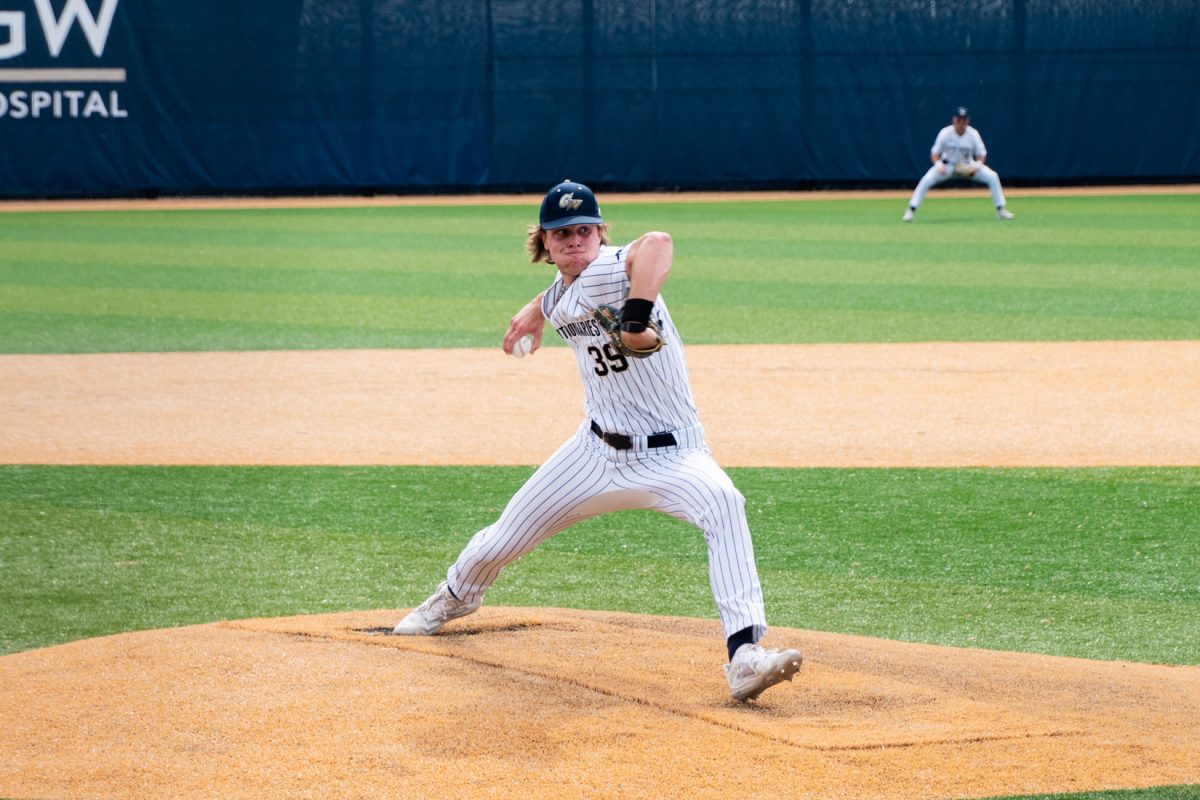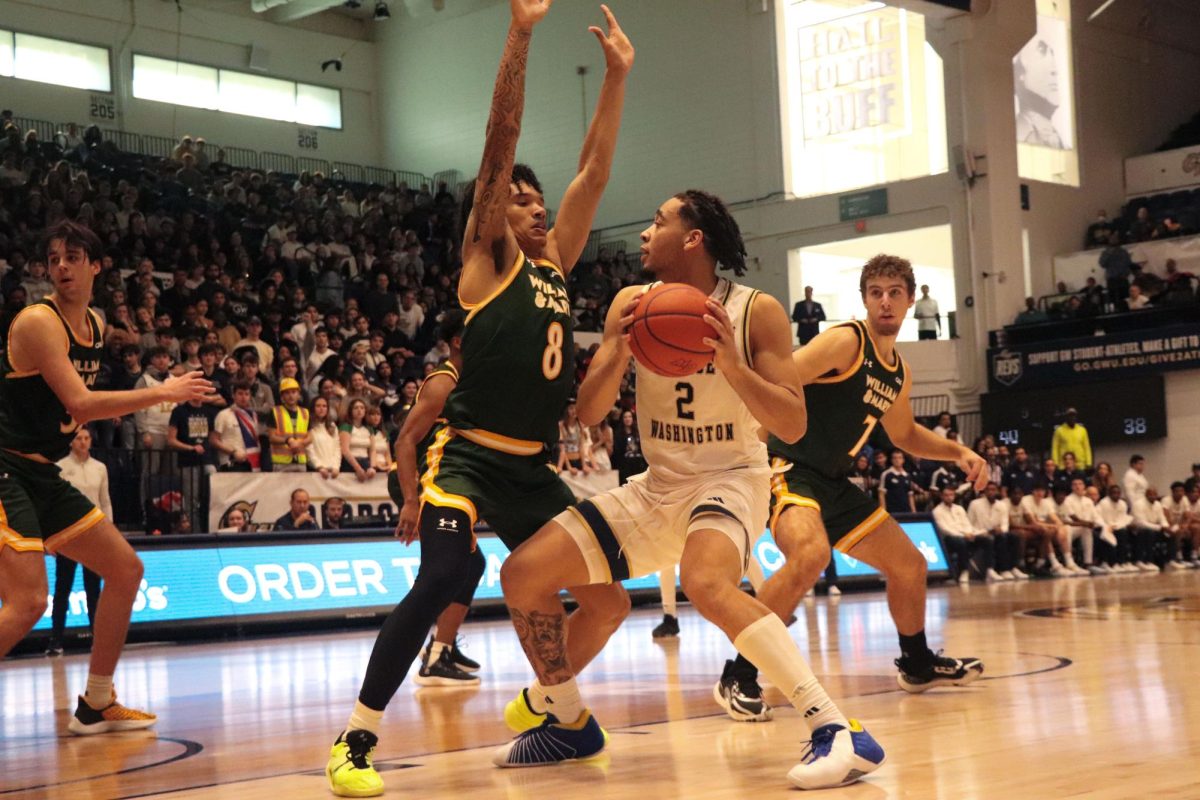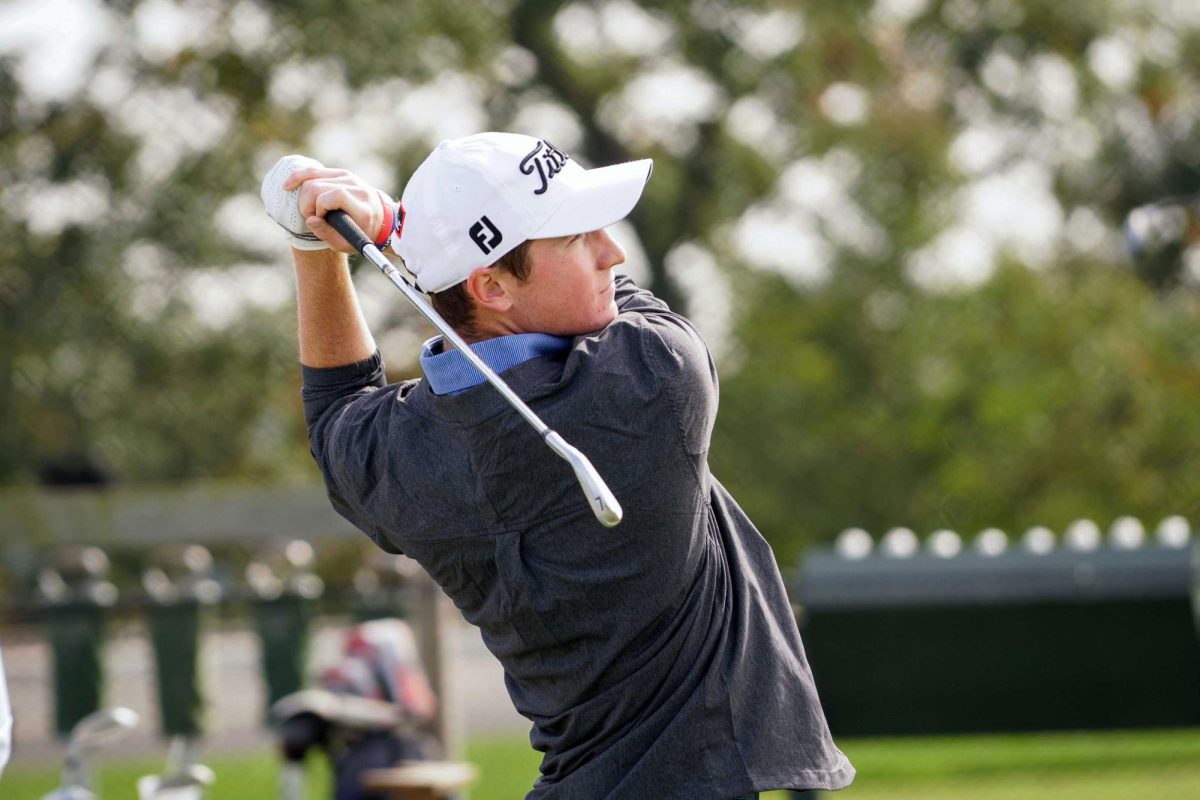When NCAA President Mark Emmert addressed the audience at the association’s annual convention held just outside the District on Jan. 15, his remarks centered on the pace of change in college athletics.
Less than 48 hours after the convention concluded on Jan. 18, the Atlantic 10 conference began its winter meetings, held at GW so attendees could come straight from the NCAA event.
“Items were so fresh on their minds, and the focus – of where we really need to be looking for the future of college athletics – they had been speaking about for the last couple of days,” said GW Athletic Director Patrick Nero.
Change certainly has come to define the world of college sports, but so has D.C. The site of the NCAA and A-10 meetings was no accident, and as the District becomes an increasingly important destination for NCAA administrators, GW is getting a front-row seat.
The NCAA spent $580,000 on lobbying costs in 2014, more than the previous three years combined, as potential congressional hearings and federal court cases are also politicizing the organization.
The week of the convention, USA Today reported that a meeting would take place at the White House with Obama administration officials, NCAA representatives and college athletic directors who were in town for the NCAA meetings, which would come before the announcement of a group called the “Coalition to Save College Sports.”
Nero would not comment on whether he knew about the meeting, but a source with knowledge of the event confirmed that he was there. GW’s athletic department has forged an active relationship with the White House in the past two years through partnerships like the “It’s On Us” campaign and a student athlete mentoring program.
“Over the last couple of years, we’ve really tried to, and we have been a very good partner with the White House,” Nero said. “We’ve continued to build that relationship and be involved with them, and I think that’s positive for them to have a neighbor that really is focused on helping with their initiatives.”
The strength of that relationship could help GW be a part of future college sports initiatives coming from 1600 Pennsylvania Ave. It also keeps the University close to the federal government’s dealings with college sports, as Ed O’Bannon’s antitrust claim against the NCAA and Northwestern’s appeal to the National Labor Relations Board have become national issues.
Nero estimated that recent court cases would wrap up in about 18 months. He said the decisions will help define the direction of college sports, but his general ideas are starting to take shape. The proposal to pursue an antitrust exemption for the NCAA, which would alleviate the Ed O’Bannon issue, has been floated, but Nero seemed to prefer a different, less restrictive solution.
“I think a lot of questions still remain but the philosophy has shown itself, which is a much more liberal philosophy with regards to allowing universities to make individual decisions, which has not been the philosophy in the past,” Nero said. “Now the questions are going to be, ‘What are the parameters? Are there going to be parameters.'”
That philosophy was on display at both sets of meetings, where the league adopted cost-of-attendance scholarships for both men’s and women’s basketball after the NCAA approved the measure at its event among other initiatives, like approving The Villas at Grand Cypress in Orlando, Fla. as the site for the men’s golf championship in 2016, 2017 and 2018.
Nero said he was surprised to learn that the NCAA’s five equity conferences, which have the autonomy to create their own legislation that other Division I programs can then adopt, hadn’t ironed out the details of a cost-of-attendance plan for sports other than basketball. That could affect the types of eligible scholarships, for instance whether partial scholarships would qualify.
“A lot of those details I think kind of cautioned everyone to say, you know, ‘Is this a $2,000-a-year initiative or is it a $2 million-a-year initiative?’” Nero said. “And that I think is a big gap.”
Those details, more and more, seem to be taking shape in and around D.C. If nothing else, that means Nero and GW will be close to the action.








